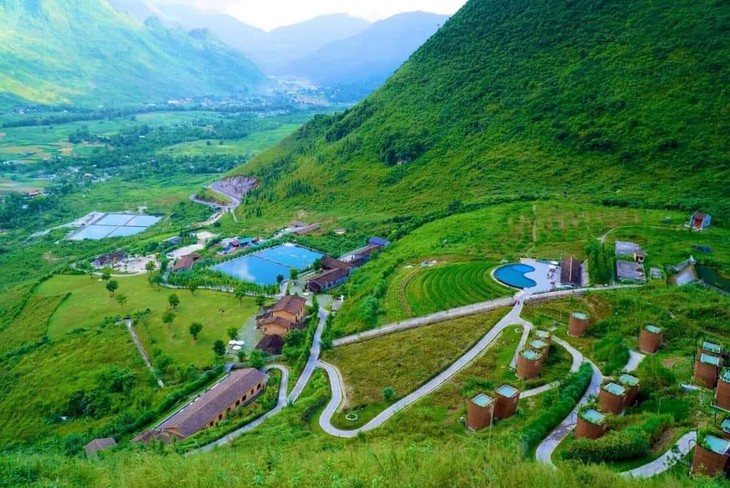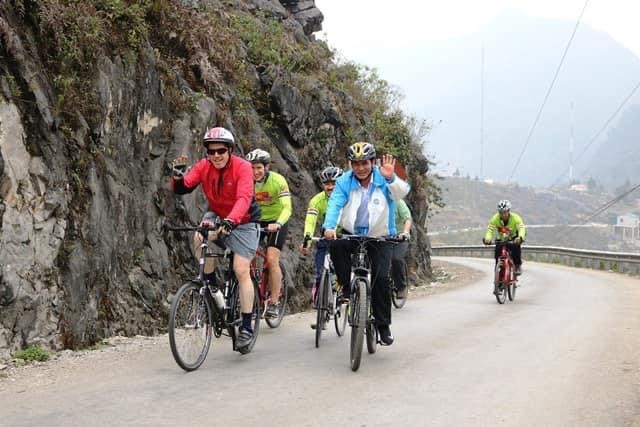Ha Giang, the northernmost province of Vietnam, has much potential and many advantages for tourism development. Ha Giang is trying to make tourism a driving force for the local economic development.

Ha Giang, the northernmost province of Vietnam, has many advantages for tourism development. (Photo: TT)
Since 2010, when Dong Van Karst Plateau was recognized as a member of the UNESCO Global Geopark network, Ha Giang's tourism brand has steadily developed. The province has leveraged the karst plateau by preserving the cultures of its 19 ethnic groups and boosting promotion programs.
Trieu Thi Tinh, Deputy Director of the provincial Department of Culture, Sports and Tourism, said, “Ha Giang has worked to preserve its cultural values and keep intact its natural heritages, especially the Dong Van Karst Plateau. We’ve maintained our traditional festivals to attract tourists to Ha Giang.”
Ha Giang aims to turn tourism into a key economic sector by 2025 and attract 3 million visitors. Under an orientation to 2030, Dong Van Karst Plateau will be recognized as a national tourist area that welcomes 5 million tourists and earns 800 million USD per year, contributing 14% of the Gross Regional Domestic Product and creating 20,000 jobs.
Ha Giang is also developing its eco-tourism, resorts, and agricultural tourism, Tinh said, adding that it's difficult for Ha Giang to maintain its tourism brand.
"It’s even more difficult to position Ha Giang’s tourism products. Ha Giang's tourism brand has recently been affirmed, thanks to the close direction of the local administration. We’ve been building a tourism brand to attract foreign visitors,” according to Tinh.

Ha Giang province aims to make tourism a key economic sector by 2025, attracting 3 million visitors. (Photo: TT)
Late last month, at a seminar called “Positioning and building Ha Giang province’s tourism brand”, participants said that by exploiting core values and unique tourism products in a green and sustainable direction, Ha Giang is becoming an emerging Asian destination.
Lee Kyung Taek, Deputy Chief Representative of the Korea Tourism Organization’s Representative Office in Vietnam, said he thought Ha Giang should continue to upgrade its facilities to attract foreign visitors.
“Ha Giang has beautiful natural landscapes. It needs tourism products that link provinces. Natural landscapes should be combined with water sports, cable cars, and scenic bridges to attract Koreans and other foreign tourists,” said Lee.
Dr. Vu Nam of the Tourism and Hotel Faculty of the National Economics University said Ha Giang needs to prepare resources and strengthen cooperation between localities to create a unique and sustainable tourism space.
Ha Giang should devise new plans and policies consistent with the current development trends, said Nam, adding, “Ha Giang needs to pay attention to its strengths and encourage tourists to buy its tourism products. This will boost the competitiveness of Ha Giang tourism.”
Ha Giang has 54 businesses and cooperatives licensed to provide travel services and some 900 tourist accommodation establishments. The province has been considered, for many years, an attractive destination with unique, wild, majestic scenery.
Vinh Phong